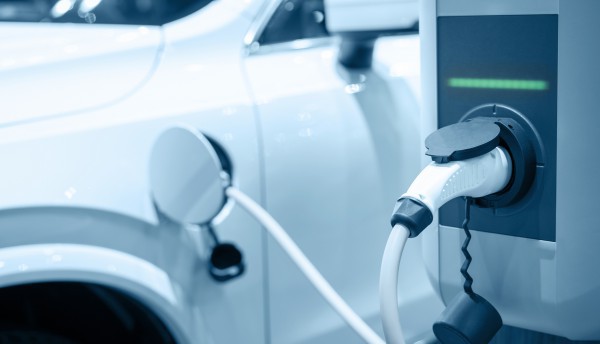
The electric vehicle charging industry has rapidly evolved, driven by the global shift toward sustainable transportation and the increasing adoption of EVs. This sector includes home chargers, public charging stations and fast-charging networks, all essential for supporting the growing number of EVs on the road.
A notable triumph of the industry is the expansion of charging infrastructure. Governments and private companies are investing heavily in charging stations, making it more convenient for EV users. The development of ultrafast chargers has significantly reduced charging times, addressing one of the main concerns for potential EV buyers — range anxiety.
However, the industry faces several challenges. A primary issue is the standardization of charging protocols. With various manufacturers developing different technologies, compatibility can be a concern for users. Additionally, integrating charging networks with renewable energy sources poses challenges. While many stations are now powered by renewables, ensuring a consistent supply and managing peak demand remain hurdles.
Technological breakthroughs are emerging to tackle these challenges. Innovations such as vehicle-to-grid (V2G) technology allow EVs to return energy to the grid, providing benefits of energy storage and grid stability. Advancements in battery technology are also leading to longer-lasting and faster-charging batteries, enhancing the overall EV experience.
Despite the strides made, ongoing challenges related to standardization and energy management must be addressed to ensure continued growth and user adoption. The industry needs to confront these issues head-on to maintain momentum. The future looks promising, with continued innovation expected to shape the industry's trajectory.
To gain deeper insights, we spoke with Dennis Müller, senior vice president of Product Marketing and Communications at ADS-TEC Energy. Müller highlights the role of battery chemistries in charging stations. ADS-TEC Energy utilizes nickel manganese cobalt oxide (NMC) cell chemistry, which balances high-energy density, power output and performance flexibility. NMC cells provide some of the highest energy densities among lithium-ion batteries and support fast charging and high-current output, essential for applications such as EV acceleration. The thermal stability and safety of NMC cells, coupled with ADS-TEC’s advanced battery management systems, ensure reliability and longevity.
Müller emphasizes the importance of dynamic load management in optimizing energy distribution during simultaneous charging sessions. By employing a technology-agnostic architecture, ADS-TEC allows customers to integrate their preferred energy management systems (EMS), enabling real-time optimization based on vehicle state-of-charge and grid conditions. This flexibility empowers operators to implement advanced algorithms that adapt to changing energy demands.
Regarding grid stability, ADS-TEC's solutions are designed for energy market applications such as energy arbitrage. Its systems can shift energy usage to off-peak periods and store excess renewable energy, contributing to overall grid efficiency.
Data analytics play a vital role in monitoring performance and predicting maintenance needs. ADS-TEC captures extensive data points for precise diagnostics and trend analysis, ensuring optimal operation and a seamless charging experience.
Müller also underscores the importance of life-cycle analysis in understanding the environmental impact of battery systems. By assessing metrics such as embedded carbon footprint and recyclability, ADS-TEC aligns with sustainability standards while supporting customers in meeting their environmental goals.
Finally, ADS-TEC's systems have a life span of over 10 years, with batteries lasting between 7 and 12 years. While battery replacement is a consideration, the overall return on investment remains favorable, especially when factoring in the cost savings from avoiding major grid upgrades.
In summary, while the EV charging industry is advancing rapidly, it must address key challenges to ensure sustainable growth and user adoption in the coming years.

[Source: ADS-TEC Energy]
The following is an edited transcript of the conversation:
S&P Global Mobility: What specific battery chemistries are used in your charging stations, and how do these impact the charge-discharge cycle efficiency and thermal management of the system?
Dennis Müller: Today, ADS-TEC Energy battery-buffered solutions are utilizing nickel manganese cobalt oxide (NMC) cell chemistry, which is a highly popular lithium-ion battery type due to its unique balance of high-energy density, power output and performance flexibility. It offers some of the highest energy densities among lithium-ion chemistries, making it ideal for electric vehicles and compact energy storage solutions. The three key metals contribute distinct benefits: Nickel boosts energy density, manganese enhances thermal stability and safety, and cobalt improves cycle life and overall performance.
NMC cells also support high-current output, enabling fast charging and responsiveness in high-power applications like vehicle acceleration or high-power charging. They offer good cycle life, especially with optimized battery management systems that control charging rates and temperature. NMC batteries are thermally stable with proper management, which is handled by ADS-TEC Energy’s own battery-management system technology that has been in use for over 15 years with hundred thousands of modules in the field.
Significantly, ADS-TEC Energy’s cell technology-agnostic approach enables flexibility in adapting to evolving battery chemistries such as NMC, LFP [lithium iron phosphate] or solid-state, ensuring long-term compatibility and scalability. This allows ADS-TEC Energy to choose the most optimal cell for each application — without redesigning core systems. This strategy reduces supply chain risks by avoiding dependence on a single material or vendor. It also supports future innovation, making it easier to integrate next-generation technologies as they emerge.
How does your system implement dynamic load management to optimize energy distribution during simultaneous charging sessions? What algorithms are used to prioritize charging based on vehicle state-of-charge and grid conditions?
ADS-TEC Energy battery-buffered solutions are designed with a technology-agnostic architecture that supports seamless integration with third-party energy management systems (EMS) through a standardized Modbus interface. Rather than embedding proprietary load-management algorithms, we empower our customers to deploy the EMS solution best suited to their operational strategy, grid constraints and site-specific requirements. This approach enables dynamic load management by allowing the EMS to control and optimize charging behavior in real time — balancing factors like vehicle state-of-charge, grid load conditions, local energy production and tariff structures. Depending on the EMS selected, advanced prioritization algorithms such as rule-based scheduling, predictive control or AI-based load forecasting can be implemented. Our system ensures maximum compatibility and flexibility, giving customers full control over how charging sessions are managed and scaled to meet evolving energy demands.
Does your system have capabilities for providing grid frequency regulation services? If so, how does it manage the charging and discharging cycles to contribute to grid stability?
ADS-TEC Energy battery-buffered solutions are currently not prequalified for Frequency Containment Reserve services. However, our systems are well-suited for participation in energy market applications such as energy arbitrage. Through integration with a compatible third-party EMS via our open Modbus interface, operators can optimize charging and discharging cycles based on market price signals, peak-shaving strategies or self-consumption optimization. This allows our ChargePost, for example, to contribute to overall grid efficiency by shifting energy usage to off-peak periods or storing excess renewable energy when prices are low — then discharging when demand and prices are high. While not configured for grid frequency regulation, our technology supports high responsiveness, flexible scheduling and reliable energy throughput, making it ideal for dynamic, market-driven applications.
How do you leverage data analytics in your charging stations to monitor performance metrics and predict maintenance needs? What specific key performance indicators do you track to ensure optimal operation?
ADS-TEC Energy systems leverage real-time data analytics, capturing and monitoring up to 4,500 datapoints at per second intervals to ensure optimal performance and system transparency. These datapoints include detailed electrical, thermal and operational signals across all major system components, enabling precise diagnostics and trend analysis. We track critical key performance indicators such as uptime, charging success rate, session duration, energy throughput and hardware temperature profiles. This granular data allows us to detect anomalies early, support predictive maintenance, and continuously improve performance through software updates and operational insights. By analyzing these metrics over time, we ensure high availability, efficient utilization and a seamless charging experience for end users.
Have you conducted a life-cycle analysis of your battery systems? What metrics do you use to evaluate the environmental impact of your charging platform over its operational life span?
We recognize the importance of life-cycle analysis in understanding and minimizing the environmental impact of energy storage and charging technologies. The specifics of such analyses can vary significantly depending on the battery chemistry, system configuration and regional deployment conditions. In collaboration with our partners and suppliers, we assess key environmental metrics such as embedded carbon footprint, recyclability of components and energy efficiency over time, while aligning with industry best practices and evolving regulatory frameworks. As technologies and sustainability standards continue to develop, we remain committed to transparency, continuous improvement and supporting our customers in meeting their own environmental goals through flexible, future-ready solutions.
What is your battery system’s life span, and how does the cost of battery replacement impact your solutions' ROI against the reduced installation costs that result from not requiring grid upgrades?
The life span of ADS-TEC Energy battery-buffered charging systems is 10 years plus, and the life span of the batteries’ range typically ranges between 7 [and] 12 years, depending on the specific use case, load profile, environmental conditions and operational strategy (e.g., number of cycles per day, depth of discharge). While battery replacement may eventually be required, this generally represents only a fraction of the total system cost. When assessing return on investment, it’s important to factor in the significant cost reduction resulting from not requiring major grid infrastructure upgrades, especially in areas with high demand charges or limited grid capacity. In many scenarios, even with future battery replacement, the total cost of ownership remains more favorable compared to traditional grid expansion — delivering faster deployment, improved scalability and long-term flexibility for evolving energy needs.








